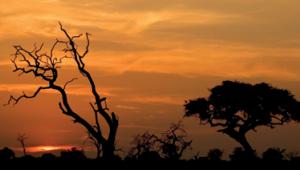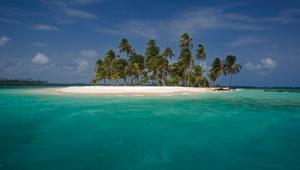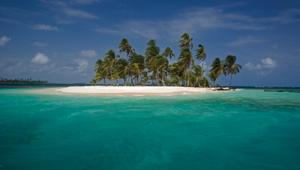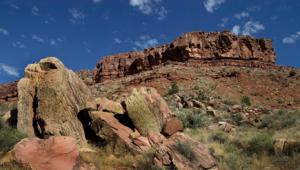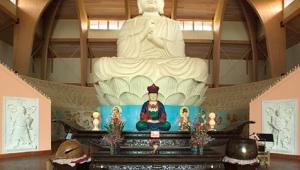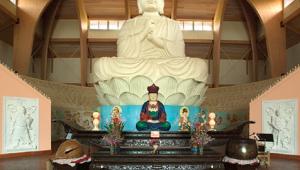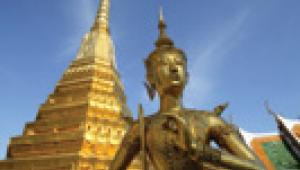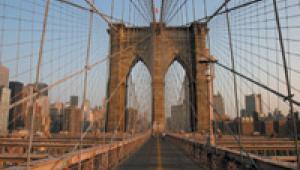Globetrotter
Goin’ Digital On Safari; Africa Offers The Ultimate Wildlife Experience Page 2
Set The White Balance
Digital cameras allow us to set the white balance for the existing lighting
conditions. When we set the white balance, we are telling the camera that we
want white objects in the scene to be white. If the white is recorded white,
then all the other colors in the scene should be accurately recorded. This is
very important in commercial and scientific photography, where clients need
to have their products shown with accurate color.
 |
For the type of pictures we take, we don't have to be extremely fussy
about color. We can even set the white balance on our cameras for different
effects. Generally speaking, I don't use the Auto setting, because the
other white balance options offer more accurate or creative effects.
Because I shoot raw files, I can change the white balance for an image in Photoshop's
Camera Raw plug-in on my computer. For this picture of a pair of lions resting
in the shade of the safari vehicle from which I was photographing (that's
my shadow behind the male's head), I selected the Cloudy white balance
setting, which gave me more saturated colors and a warmer picture.
If you shoot JPEG files, you can warm up the tones in a picture with one of
Photoshop's Warming Photo Filters, which are adjustable.
Take "Sense Of Place" Photographs
When we are photographing wildlife, it's important to take photographs
that capture a sense of place to help us with our storytelling. In addition
to taking wide location shots that show the larger geographical features of
a location, I like to make images that show the animal within its immediate
environment. Here I photographed a herd of elephants drinking along the banks
of the Chobe River.
 |
Silhouettes At Sunset
Sunsets offer a wonderful opportunity to take dramatic silhouettes of animals.
The key is to frame the animal so the sun or part of the bright sky is behind
the animal, which is what I did for this shot of an elephant at a watering hole.
For dramatic sunset silhouettes, I recommend setting your camera on Aperture
Priority and then taking pictures with the exposure compensation set at -1,
then - 11/2 and -2 (and in between those setting if you want to fine-tune your
exposures). The reduction in exposure will give you more saturated colors and
make the silhouette more dramatic. It also helps the bright light from becoming
too overexposed in the scene, which can ruin a picture.
 |
Setting the white balance to Cloudy will also give you more dramatic colors
than if you set the white balance to Auto. Also, keep in mind that as the sun
gets lower in the sky, it's necessary to increase the ISO setting.
One final tip on shooting sunsets: Wear sunglasses and don't look directly
into the sun. If you look into the sun for just a second or two, you will be
seeing red blotches for several minutes. What's more, you could cause
damage to your retina.
Think Digital Enhancements
Adobe's Photoshop and Photoshop Elements have changed the way we not only
make pictures in the digital darkroom, but also the way we take pictures (on
site) as well.
 |
 |
When I am out shooting, I am thinking about how a scene can be enhanced in
the digital darkroom. For example, when I was photographing this tiger in the
shade on an overcast day, I knew that I could boost the brightness, color, contrast,
and sharpness of the image in Photoshop for a much more dramatic image.
Did I see a tiger in Africa? No way! There are no tigers in Africa. I actually
took the picture at Big Cat Rescue near Tampa, Florida. I include it here for
two reasons: One, to illustrate the power of the digital darkroom. Two, to show
you that you don't have to go all the way to Botswana to get good wildlife
pictures!
 |
Gear Up!
Gear plays an important role in the life of a digital travel photographer. In
addition to cameras and lenses, your travel gear bag needs to include several
memory cards so you don't have to delete pictures during the day and a
laptop for storing and viewing your pictures at night. If you don't want
to travel with a laptop, the smaller and more affordable Epson P-2000 (www.epson.com),
Nixvue (www.nixvue.com),
and FlashTrax (www.smartdisk.com)
portable hard drives, complete with LCD screens, are an option. You should also
have power/plug converters so you can plug in your computer in hotel rooms in
foreign locations, surge suppressor so your computer does not get "zapped"
by a power surge, and DVDs on which you can save your pictures each night (you
should always have your pictures saved in two places before you erase a memory
card). Oh yeah, traveling with a small compact camera is a good idea, too. There
are times around a safari camp when you might want to take a break from lugging
around all your gear and take some fun snapshots!
Rick Sammon loves digital photography and Photoshop. He likes (needs) to keep busy! He has written 25 books, hosted 20 cable/satellite TV shows, and has produced five interactive CDs/DVDs for Photoshop CS and Elements users--and photographers. He teaches digital photography workshops and Photoshop courses around the world. See www.ricksammon.com for more info.
- Log in or register to post comments


